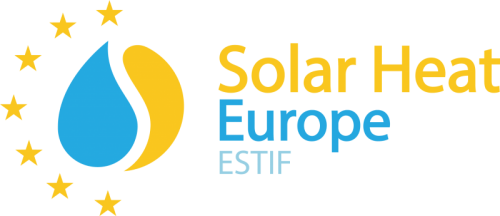In 2022, the solar thermal market continued to grow. We finish the year with very good expectations regarding the sales growth in 2022 and in 2023, with most of the main markets expecting positive results in both years. We will have the opportunity to address this further in an event for members-only, to be held in January.
Regarding the different segments, the growth trend of recent years for solar district heating (SDH) and solar heat for industrial processes (SHIP) continues, reaching once again new milestones. For instance, the largest SHIP plant in Europe is being developed in Croatia by a consortium led by one of our members (and incorporating several others). This project has been supported by the EU Innovation Fund and will have a capacity of 20 megawatts. In terms of solar district heating, the construction of the largest plant outside of Denmark has also started in the Netherlands. This plant, with a capacity of 32 megawatts, is also being delivered by one of our members. In addition, the building segment also had positive developments in several countries, including, for instance, France and Greece. This segment is the one that has had more erratic behavior in recent years, and it is a very good signal that most countries also face a positive trend.
Solar heat engine in Brussels
Despite the difficulties presented this year, 2022 has seen significant progress and achievements in the sector, putting a renewed emphasis on the significance of technology for clean, renewable energy. Throughout the year, Solar Heat Europe has worked tirelessly to promote the importance of solar heat and ensure that the sector is properly represented in the European energy landscape.
We have been involved in a number of initiatives to boost the sector’s visibility and impact, including the EU Solar Energy Strategy. We have also seen a number of major developments in the sector, such as the launch of the European Solar Thermal Roadmap and the launch of new measures at the national level, that in combination have led to the growth of the European Solar Heat Market.
In light of these achievements, it is clear that the solar heating sector in Europe is on a strong trajectory. We are confident that, with the continued hard work of our members, the sector will continue to grow and thrive in the years to come. As we look forward to the future, let’s go through this eventful year.
The energy crisis and European policy
2022 was the year of the energy crisis’s escalation. The energy crisis started in 2021, but its dimensions and impact increased in 2022 because of the Russian invasion of Ukraine.
2022 was also the year when the European Commission launched the EU solar energy strategy.
Solar Heat Europe contributed to this strategy in an important communication from the EU, where they stress the expectation of a tripling of solar thermal by 2030. While the EU solar energy strategy was mainly focused on solar photovoltaics, it also included relevant references to solar thermal and measures that also apply to solar thermal, such as the solar mandate or permitting.
There were also disappointing aspects. The European Commission released the RepowerEU plan, which ignored the solar thermal sector. This plan mainly focuses on diversifying gas supply sources, going into doubtful options for increased supply of LNG to Europe, or pushing for hydrogen. It is mostly focused on gas, and the impacts of the proposed measures can have dire consequences for future carbon emissions. There were also some measures touching on renewables and energy efficiency, but they were rather timid compared to the focus on gas. And the part on RES shows the emphasis on electrification. The measures on renewables are mostly limited to solar PV and heat pumps, with quite unrealistic targets.
The full impact of RepowerEU is still to be assessed, but it is clear that this kind of approach to immediate actions is not compatible with renewable technologies. And once again, there is a lack of attention to the need for addressing renewable heat and combining different solutions and technologies, which is going against what should be expected in terms of the impact of these measures on the carbonization of the heat supply in Europe.
Simultaneously, the work on the Fit for 55 Package continues. As we have informed you on several occasions, this new package includes a stronger emphasis on measures related to heating and cooling. While a final text is still being negotiated, we know that this new package is more positive than the one released in 2018, which in itself already represented a step forward for solar heating from the previous Renewable Energy Directive (RED).
30 years of European action for solar heat
Going into more detail on the work done by our association, I would like to point out the celebration of the 30th anniversary, combined with the number of events held in June in Brussels and other actions within the scope of one year. The main highlight goes to the launch of the Solar Thermal Roadmap for Europe: Energizing Europe with Solar Heat. This roadmap had over 200 signatory entities from our sector and beyond. It highlights the main measures needed to facilitate a fast deployment of solar thermal on our continent. This roadmap was launched at the public events held in Brussels last June. We must thank our sponsors for their support and the commitment of the members, the board, and our secretariat that made it possible.
Looking forward
In the upcoming year, we will face important challenges, such as the focus on electrification, including heat pumps and solar PV, disruptions in supplies, and increases in costs. On the other hand, we will also face incredible opportunities, as the need to transition to renewable solutions is clearer than ever and considering the current trends, solar heat will grow its impact in a clear way.
We count on continuing this positive work in Solar Heat Europe with your support. To the benefit of Europe and its residents, we shall continue to collaborate to ensure that the environmental, social, and economic advantages of solar heat are well recognized and that strong and effective policies supporting solar heat are in place.
Best wishes for 2023!


Leave a Reply